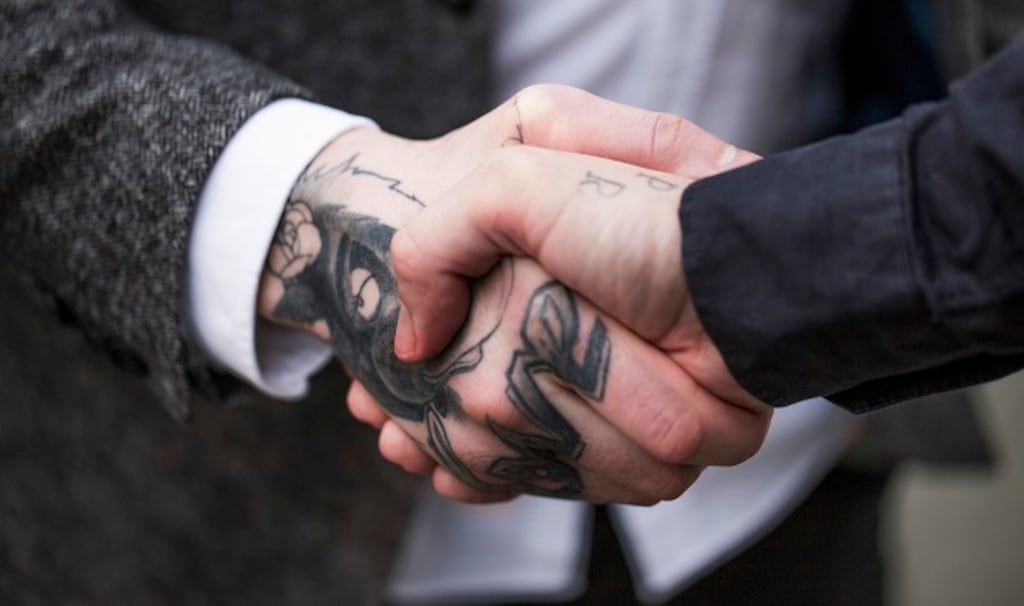Tattoos have been around for centuries. They were among one of the first forms of art and have since become ingrained in our society as a widely accepted cultural trend. Getting a tattoo is an individual’s choice.
A choice, people should put months of thought and consideration into before making this lifelong decision. Sadly, these personal decisions are becoming a hindrance for qualified professionals looking for a job in their respected fields of work.
Tattoos aren’t cheap and artists generally charge by the hour. This can vary hugely from artist to artist as they charge what ever they think their skill and reputation has warranted them a right to. Some of the more famous tattoo parlours will only take on a tattoo priced $200 up.
High Voltage tattoo - an internationally famous tattoo parlour- states on its website, “We do have a $200 shop minimum, but please contact our artists to discuss details”.
Tattoos are a controversial topic at the best of times, but many cultures embrace tattoos Others, such as Japan, frown upon tattoos and what they stand for. If you have a tattoo that is somewhat visible when in a bathing suit you are not allowed into a public swimming pool.
Japan’s anti-tattoo policies don’t stop there.
In 2012, Toru Hashimoto, the Mayor of Osaka, went on a hunt for civil servants that had any sort of tattoo.
The campaign did not discriminate between those whose tattoos were visible while wearing everyday work clothes or those who might have just had a little butterfly hidden out of view on their lower back.
A court eventually ruled the Mayor's anti-tattoo drive to be an invasion of privacy and the campaign was deemed illegal.
This stigma originated centuries ago, when the only people who had tattoos were sailors and criminals, but times have moved on, or have they?
The sales and distribution manager for the insurance company Zurich, Lorcan Harding does not think tattoos should be the defining factor of an employee. He said, “I hire people who will meet their objectives.” Adding tattoos are fine “as long as they are not offensive”.
Nick Walsh, a tattoo artist and owner of the tattoo parlour ‘Tomb Stone Ink’ says, “I would always warn people about getting tattoos on the hands and neck, everywhere else can be casually covered up…… but I won’t touch the face unless it’s for cosmetic repair.”
It is fair to believe that visible tattoos in some jobs are simply inappropriate, and deemed unprofessional. Jobs like primary school teachers and people working around kids should have all their tattoos covered while in the working environment.
Mr Walsh said, “it depends on the job, if it’s not around kids [then] it shouldn’t be a problem.”
Matrix Recruitment recently ran a poll on 200 Human Resource (HR) managers. The HR managers were from industries such as, Engineering, Financial Services, Hospitality, IT, Manufacturing, Medical, Pharmaceutical and Retail.
Their research found that 53.8 per cent of HR managers wouldn’t have a problem with employees having a tattoo, and it would not have a negative effect on their chances of progressing up the promotion ladder. Just over 1 per cent were very favourable and then 3.6 per cent were somewhat favourable.
That increases to 57.4 per cent of HR managers that were polled not seeing any issues with having tattooed employees.
These figures are optimistic for those who have tattoos. The change in attitutes can be ascribed to the positive exposure that online media give tattoos and the culture into which it is amalgamating.
According to Matrix Recruitment you are more likely to miss a job opportunity because of “Dirty nails, creased shirts and messy hair”.
Tattoos have nearly completed a whole revolution on the social spectrum. People say a picture paints a thousand words and now so does a tattoo.











